Avowed is so much closer now, and having gone hands-on with the game, there are so many questions I wish I could ask the Obsidian team. One of the biggest takeaways was Avowed’s ability to be played in both first-person and third-person perspectives. Coming from the Pillars of Eternity universe, there was already a precedent set for fans of the universe, but gamers in 2025 can demand so much more, and Obsidian Entertainment was there to answer the call.
So many times, I have heard people complain about a game not being in first-person or third-person perspectives, and the jury is really split between the two. Rather than alienate future Avowed players, the team decided to give them a choice, nearly doubling their work, but in the end, I can say confidently that all the hard work paid off.
I was able to sit down with some of the team behind Avowed: Gameplay Director Gabe Paramo, Lead VFX Artist Ash Kumar, and Senior Animator Seth McCaughey. We discussed why the choice to double the workload, how they made it all happen, and some of their favourite parts of Avowed from different perspectives.
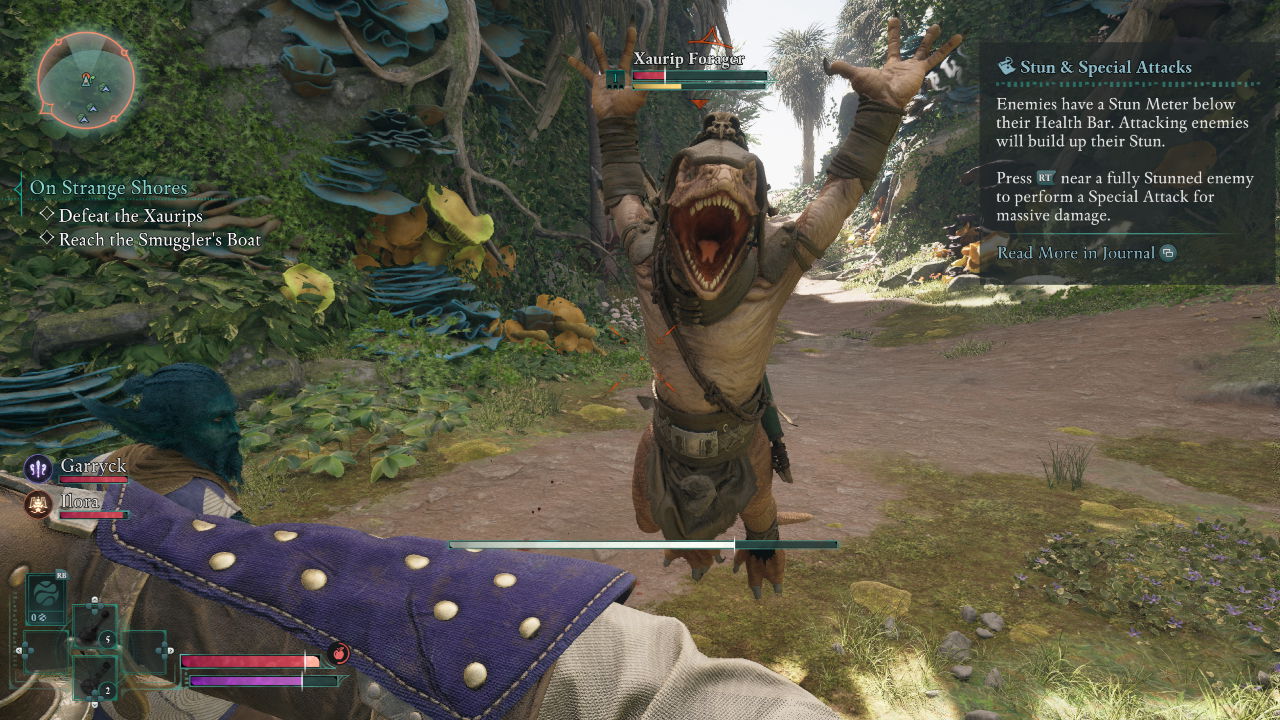
We are here to talk about perspectives in Avowed. We’re set in the world of Pillars of Eternity, but we’re changing how we see that world between the third and first-person. Why the switch?
Gabe Paramo: I’ll start. Back when Pillars was originally being created, I was not here for that. But I believe a big goal there was to say to the industry, “Hey, there’s still players out there that really like these C RPGs, these isometric…” There’s still a player base for that.
In a natural progression like Fallout, for example, they went from that isometric camera into a first-person perspective to put the player in the eyes of what it would feel like to actually be in the wasteland there. So it’s a very similar natural progression of how do we take that bird’s eye view and put it into the player’s perspective and give them a much more immersive experience than maybe that isometric camera.
I don’t know if anybody else. I mean, Seth, were you here for that? You were here, right?
Seth McCaughey: For Pillars [of Eternity]. Yeah, I actually worked on Pillars. Yeah, it was definitely like a lot of us are fans of those good old isometric view games. But the goal here was to be more in the eyes of the character as you’re playing.
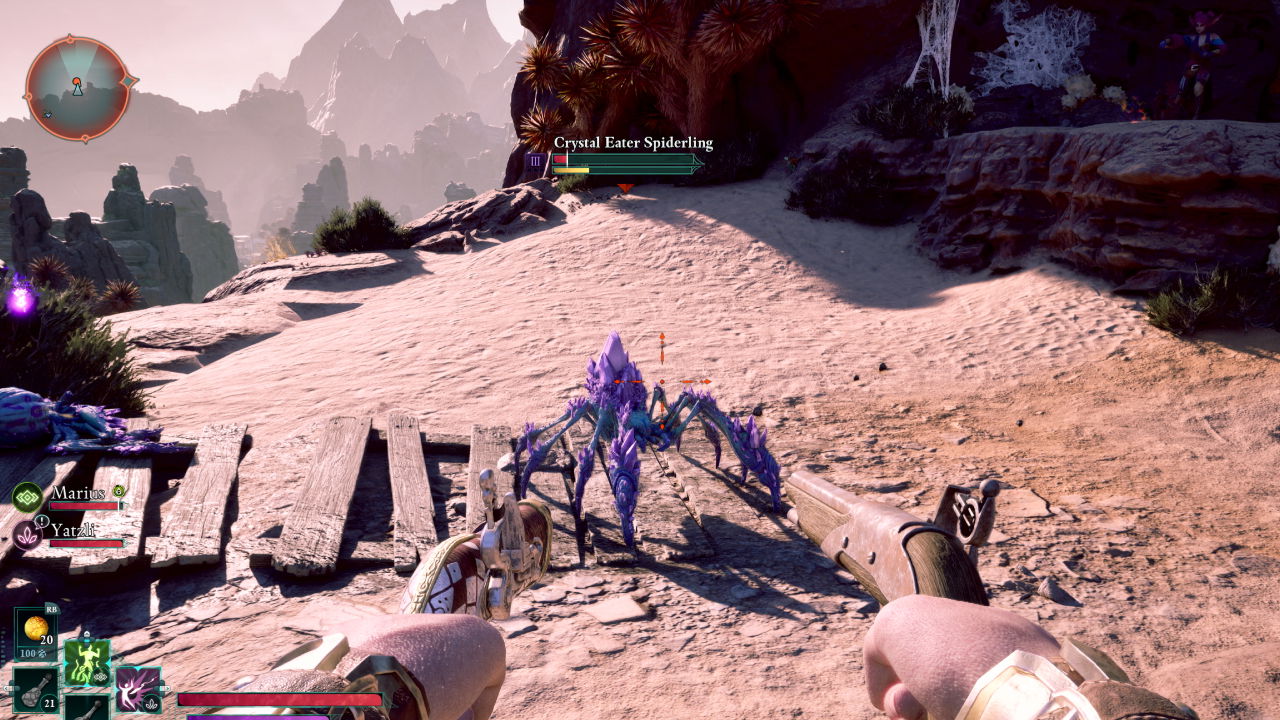
So why was it important to do both first and third-person in Avowed rather than just choosing one, and how did the team come to that decision?
Gabe Paramo: So the decision, basically, that was decided on back when we were actually a multiplayer game where when you’re looking at the players in first-person perspective, but when you’re looking at another player, you’re actually seeing them in a third-person perspective. So we had built that technology.
And when we kind of did the the shift over to not be multiplayer focused, that allowed us to take that technology and give that player the opportunity to give them the choice of what would they prefer, first- or third-person. So it’s always kind of been, the system-wise has always kind of been there ingrained because we needed to support it back when we were that style of game.
Ash Kumar: Also, another thing that we ran into is a lot of members on the team also had, when they were playing in first-person, they were getting motion sick. And there’s a huge number of people who play this game, and they’re like, “I can’t play this game,” just because of the head bobbing and the motion when the character is sprinting. So, having that as an accessibility setting helped us get around a ton of those issues, which is great.
So how does that work from your perspective, fixing the entire motion sickness part of that in Avowed? Is it just the switch to a different perspective or are there ways to adjust that, staying in first-person?
Gabe Paramo: So when you pull back the camera, the player gets just more of a more of a perspective on the battlefield, right? And it allows them to kind of just give them the space between enemies and the animation motions. Sorry, I won’t speak for animation, but right up the character motions to kind of disconnect that from the camera.
Whereas, when we’re making, again, I’ll let Seth go into more of the animation, but when you kind of link them together, it does require a bit to make the player feel immersed in that your head is moving. And so, and since it’s moving differently than the animations are moving, then you kind of get that feeling of like you’re on a ship, but I don’t know if Seth has any more animation expertise there.
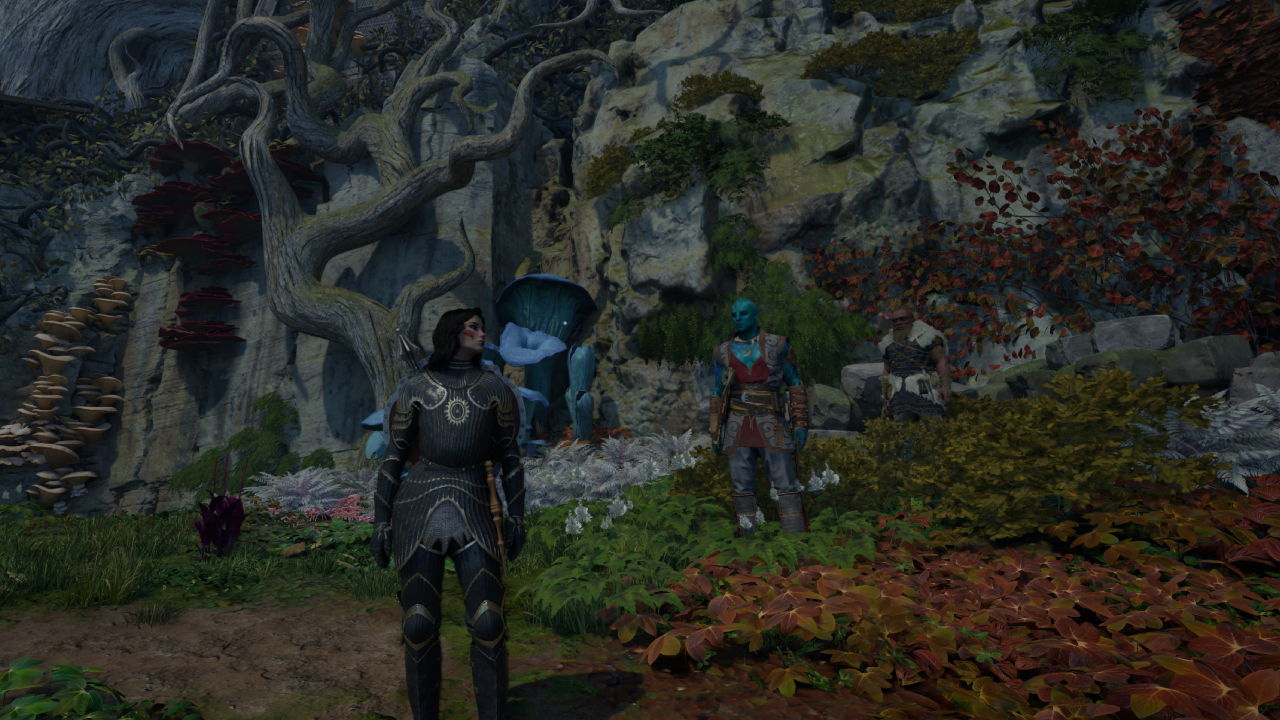
Seth McCaughey: Well, I mean, one of the advantages of third-person for melee generally is you just get a better sense of situational awareness. It is harder for enemies to slip into your blind spots. And then I think that also just helps with motion sickness because you’re spending less time spinning the camera, looking for where that enemy that just slipped out of your field of view got to, because you know where they went.
And I think also it’s more stable. You have the character themselves as a point of reference that it pivots around, so that gives you less of a crazy motion sickness kind of feel. In first-person, we have options to dial down or turn off most of the camera animation that happens. So there are options in first-person as well if you have motion sickness issues.
Now, in relation to Avowed and Pillars of Eternity and their universe, do you think there is a way that Avowed was meant to be played, whether it is first-person or third-person?
Gabe Paramo: Well, I could tell you that it was definitely made in a way that first-person did take the priority. What I mean by that is our weapon swing timings, our hit reaction timings, and all that stuff was kind of meant for that first-person perspective.
And sorry to give Seth and the animation team constraints, but the constraints there were to make feel good in third-person with the first-person timing, essentially. Because if you disconnect them too much, they become out of sync, and then you start dealing with gameplay implications when they become too out of sync, where the player feels like their timing is often different between switching between the first and third-person perspective.
Seth McCaughey: And also, there is technical stuff. In first-person, our shadows are still generated by the third-person. You don’t want to see your sword swing, and then the shadow of your sword follow half a second later. It would be pretty obvious pretty quickly. So, timing needs to be very tight generally for player experience.
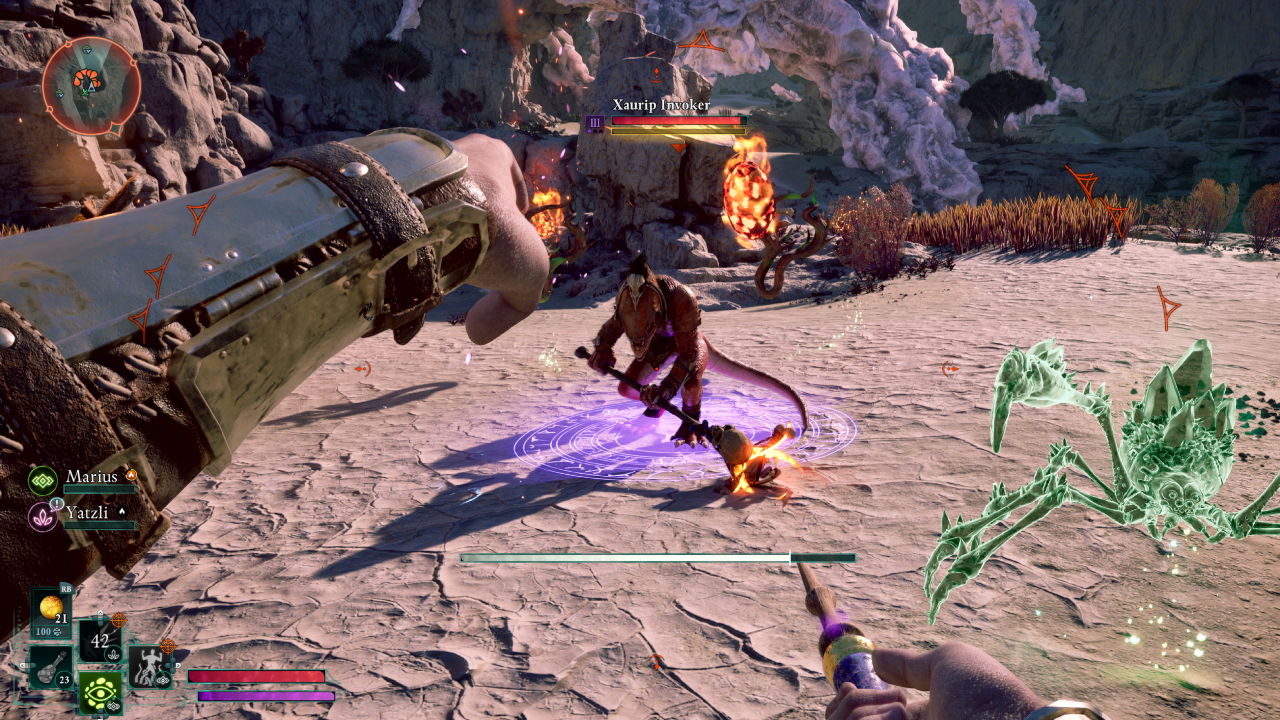
So what goes into that from the animation team and VFX team? If Avowed was originally optimized for one perspective, and now we’re going to pop into the other, what difficulties do you face in making it work for both?
Ash Kumar: I think speaking from the VFX side, we ran into a couple of issues pretty quickly where we found out the constraint for the fidelity. Because when you’re in first-person, the effects need to be way higher fidelity, and also, the footprint needs to be smaller so that it needs to fit in the view frustum of the character. But when you pull back the camera, you can go way larger with the effects, and you can drop the fidelity quite a bit.
One of the examples that we ran into pretty early on was when we were playing it in first-person, and we did a slide from a run. You have all of this dust kind of washing over you, and it feels good because it feels visceral, you’re making contact with the ground. But when you’re in first-person, all that dust when it covers your screen, it causes a multitude of issues where the player can’t see what’s happening.
And there’s performance concerns because you’re just throwing cards on the screen. To solve that, when we went into first-person, and we were sliding, we made a completely different effect that was sliding from the left and the right side of the screen. It would still give you that visceral feeling of making contact with the ground. At the same time, keeping the performance where it should be. So, that was a fun little challenge that we faced.
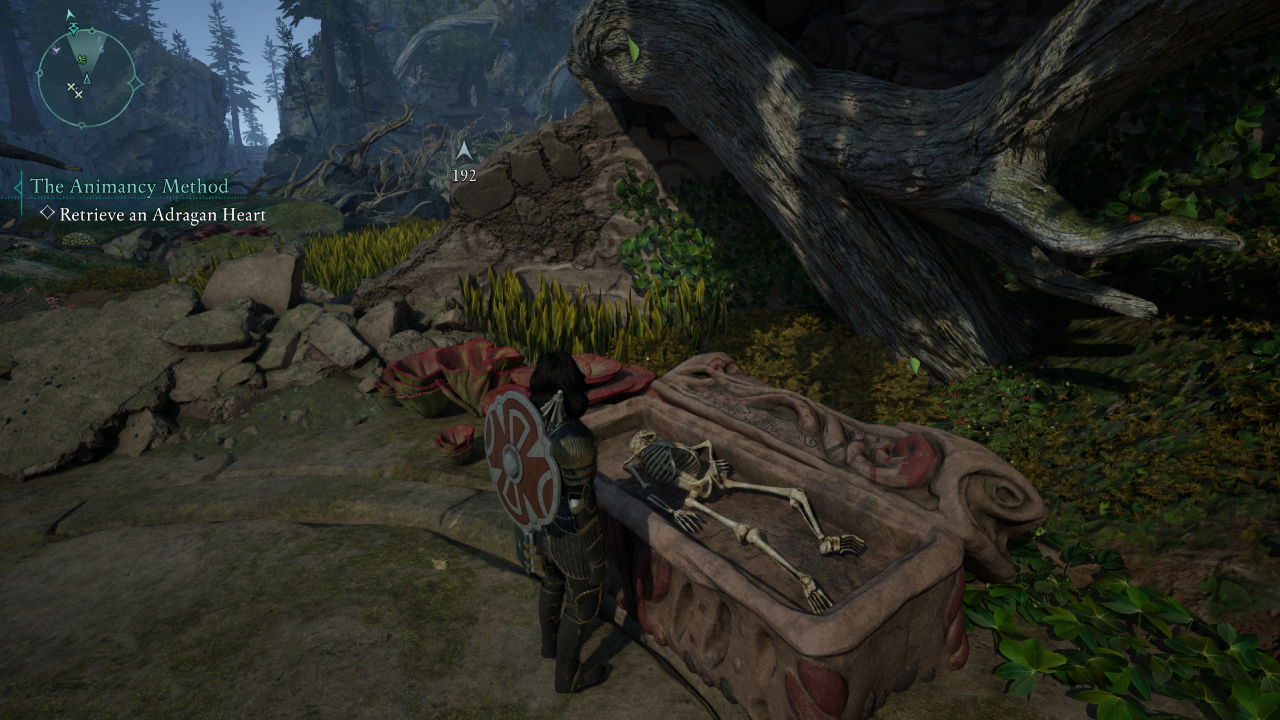
Seth McCaughey: From an animation perspective, it’s a whole completely different set of animations—more than twice the work, really. first-person, you just really have to worry about the arms and the camera. third-person, you’ve got their whole body to worry about. You’ve got to figure out what their footwork is doing.
Also, to speak to Gabe’s point about how it first-person was the main experience and the impact that had was—our goal was to give the player as much freedom as possible while they’re fighting. So, there’s very few animations that take control away and make you move, so you can, most of the time, just change direction, run forward, backwards, left, right, as you’re swinging.
And that means in third-person, you’ve got to figure out how to marry the upper body of swinging with the lower body. And if you just tack it on there, you get a lot of twisting and pinching in the spine unnaturally. It just has to go too far to turn all the way around to do a swing. So we had to build a system to have different run cycles that it blends between over the course of the swing.
So you begin running left hip forward and then end running right hip forward and then swing back. And so that was quite a complex system we had to build to really make that all flow together.
Gabe Paramo: If you’ve ever disconnected the camera to kind of see what a first-person game is doing, it’s just these floating arms with the camera, right? And so they’re just doing these motions. But then now, animators have to make that come to life, filling in all the blanks of all the different parts of the character’s body that we weren’t really envisioning at that moment.
Ash Kumar: One of the things that I’d like to shout out stats for is we had one of these abilities in the game, which is called clear out. They did completely two sets of animation for that. So, to explain what the ability is, the player kind of takes this weapon and spins around, right? If you’re in first-person and if you move your character and you spin it around, you’re going to not feel good. So Seth, I’ll let you talk about this, actually.\
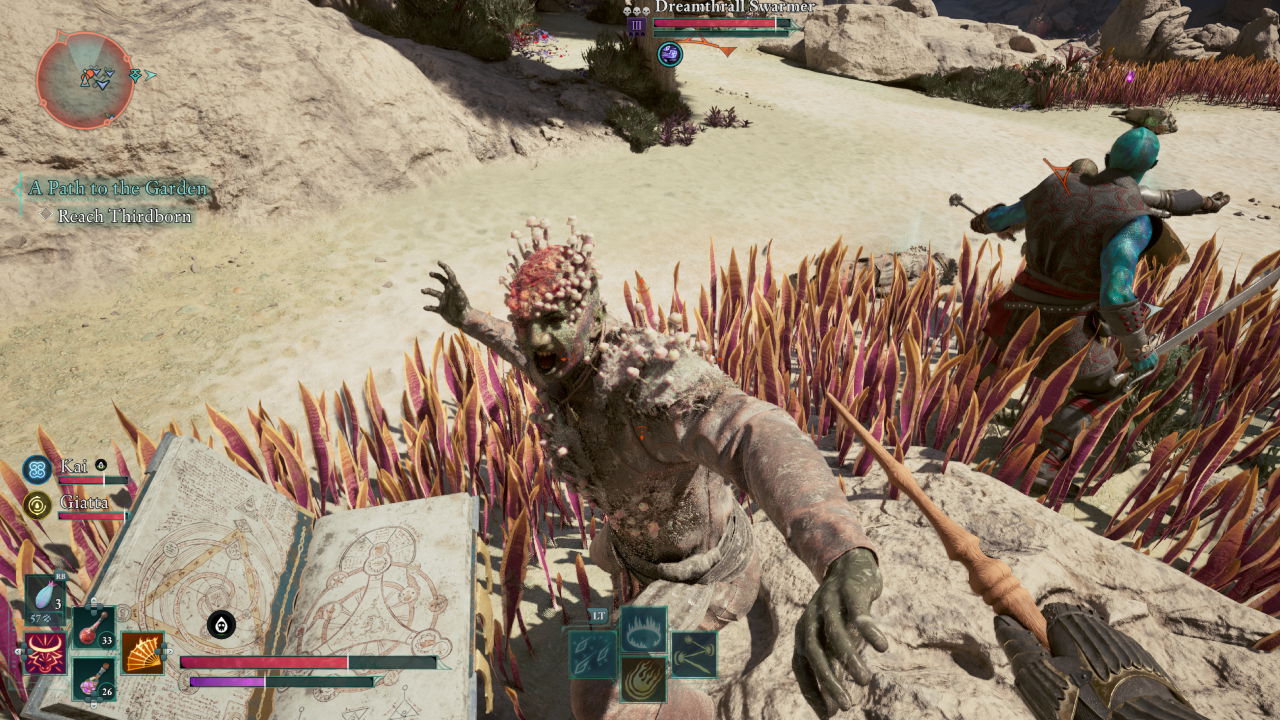
Seth McCaughey: first-person, basically, the character spins underneath the camera. So you just see arm go by, arm go by, arm go by, which I think, really, if you look at people like ballerinas or something who are doing a pirouette, they don’t keep their head facing their body. You see it stay still, and then whip, and then stay still, and then whip.
And so, to a certain degree, it doesn’t feel as weird as you’d think because it’s just like that with the sudden turns edited out. And meanwhile, in third-person, the whole character is spinning and doing all these things.
Now, we mentioned that originally, Avowed was going to be built one way, and then we added another way. How quickly did you have to get on board with that decision? Seth, as you said, it is double the work.
Seth McCaughey: I mean, we had already sort of been supporting it at a lower level of quality just to be like, “OK, here’s what it’s going to take.” But then it was like, “Okay, we’re keeping this. We really—a lot of people really—want it and really need it.” So yeah, we had to ramp up to be like, “Okay, let’s go back through everything and make sure that it’s all at the quality bar that we are comfortable shipping at.”
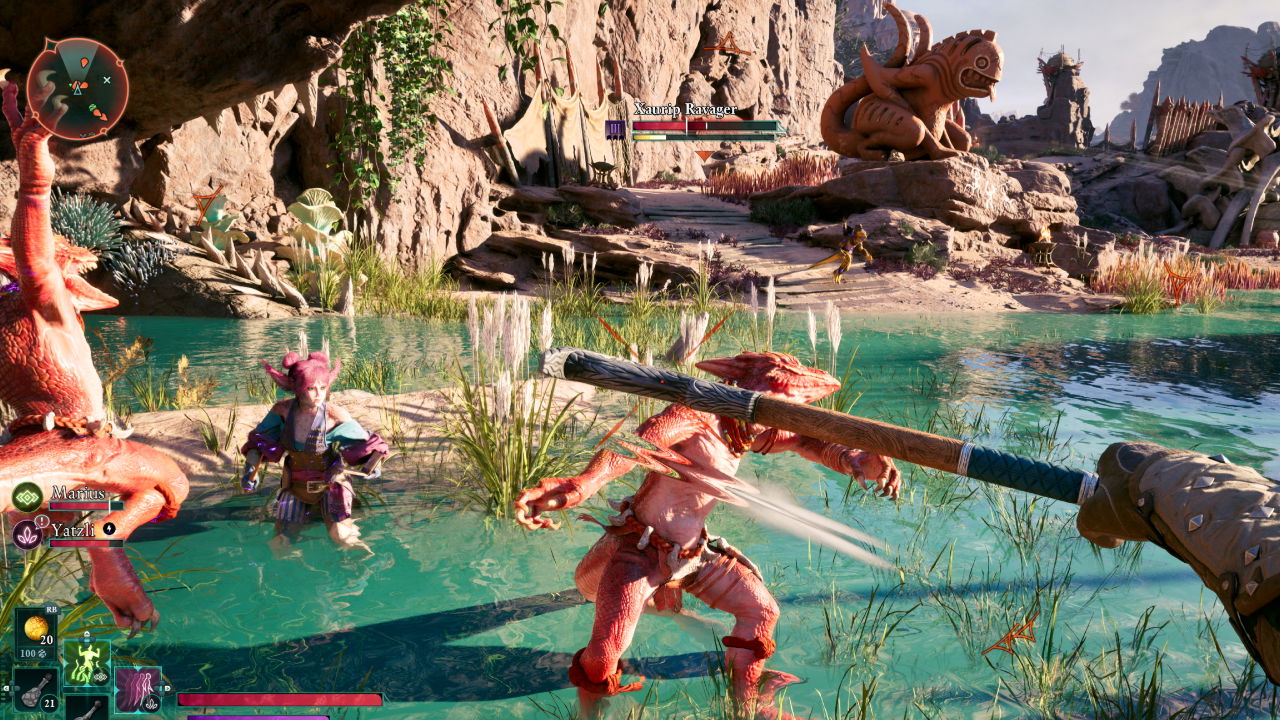
Sounds exhausting. Good for you! Having played Avowed, I can say that you’re doing a great job. Now, what do you think has changed in recent years that the swap between first and third-person isn’t as common as, say, it was when Skyrimcame out? Usually games are choosing one or the other. Why do you think that is?
Gabe Paramo: From my perspective, I definitely think there’s a very high expectation of fidelity for both. It is a thing where we are doing double the work in order to support the players that prefer this perspective. So there is an element of, again, we have to prioritize one over the other, and we have to make sure that that’s the thing where we’re putting most of our energy into, but then making sure that also the other one functions and is up to a good enough standard where it doesn’t feel like we’re taking away from that experience.
It’s kind of like, that’s the trade-off. I think a lot of projects probably don’t do it because the fidelity expectation is really, really high. Not to say that we haven’t hit that fidelity, but definitely, there’s things where when you put all your energy into third-person and you see some of these action games, you can’t compare when you’re fighting those two together.
There is just kind of a constraint there and in resource and time that we have to just make sure we’re prioritizing one to be the best over the other as much as we don’t want to, but I don’t know if anybody does.
Ash Kumar: I think to echo that, another thing that comes up pretty often is performance. As in first-person, you’re just rendering the view of the character, whereas in third-person, you’re pulling back the camera, and you have the entire character in there. So you’re paying for more polygons. So having performance be identical in both modes was definitely a challenge. And yeah, I think we did it.
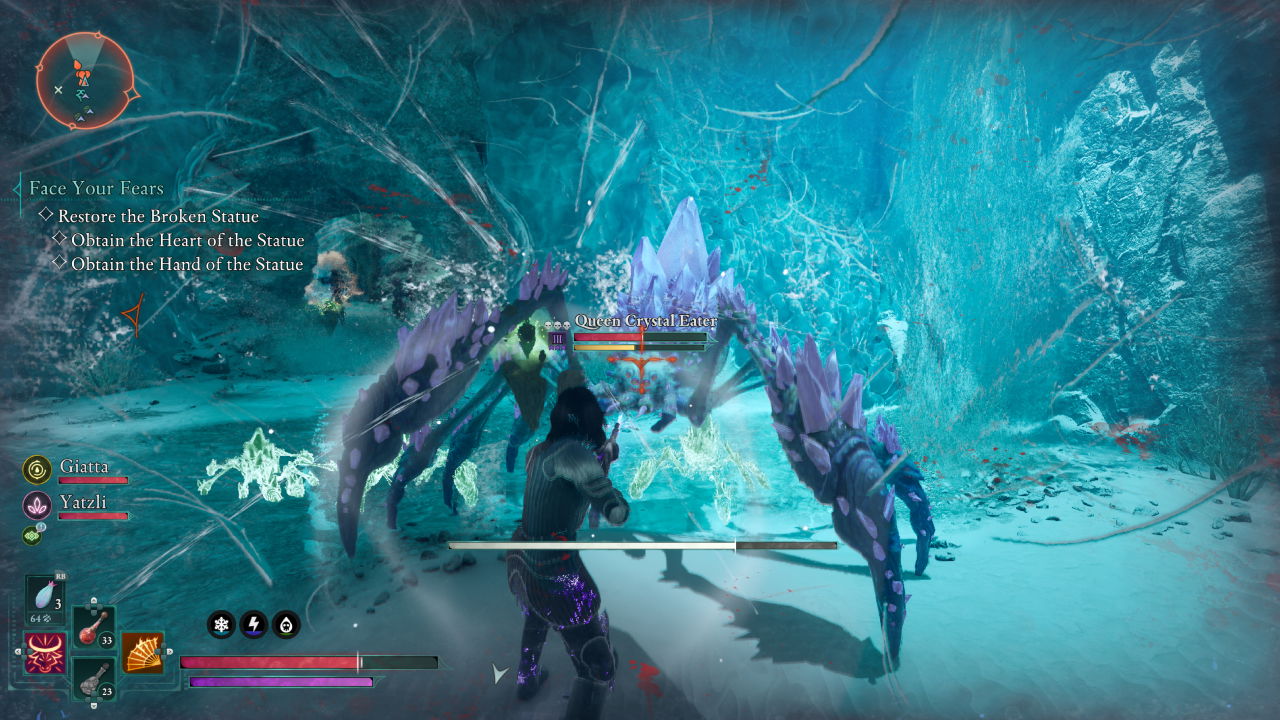
I agree! Now, why the choice to make the swap something you have to do in a menu of Avowed rather than just a toggle on and off? I know in older games, you can just bounce in and out and make the whole world look funny.
Gabe Paramo: So actually, based off of the feedback that came back in our November press event, we actually added it in the game. So it’s actually a quick toggle now.
Where? I haven’t been able to find it!
Gabe Paramo: So, if you’re playing on controller, it’s on the right stick. And if you’re playing on-
Ash Kumar: And you hold it.
Gabe Paramo: Oh, sorry. Yeah, you hold it. And the reason-
Well, you’ve changed my life.
Gabe Paramo: You didn’t ask the question, but the reason for holding it was because we found as we were playing it, people would kind of make the mistake while they were getting into the action of accidentally switching into 3P or third-person. So we added just a little bit of a slight delay so it doesn’t feel like you’re making a mistake there accidentally triggering it. I forget what the button is on the keyboard. I think it’s like U or something.
Seth McCaughey: Yeah, it’s U.
You guys just changed my life.
Gabe Paramo: So yeah, it’s there. based off players and streamers and feedback. Definitely, people wanted to see the armour they’re wearing quickly without having to go between. So yeah, to be clear, it’s both there and also in the accessibility menu.
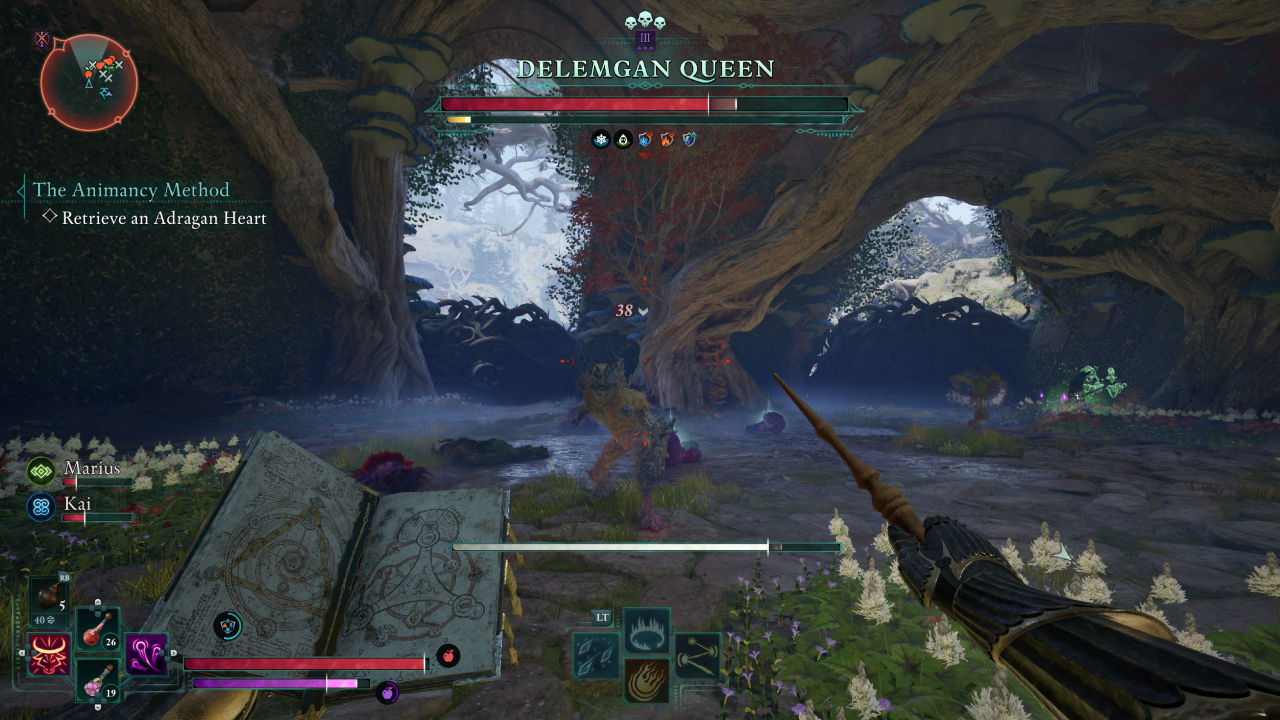
Yeah, I found it in the menu, and that’s exactly right. I want to see how cool I look regularly. Thank you for that! Why was it not there in the first place at all? Why was it just in the menu of Avowed?
Gabe Paramo: I think at that time, again, because there’s such a delay between what we show and what we’re working on, I think at that time, we just really wanted to keep polishing it as much as we possibly could to make sure that it didn’t stick out like any sore thumb or anything like that in the product.
I think it was a thing where we just really wanted to make sure we got that extra time. So, we did add a little bit of friction there. But then, also, we also just heard the feedback, too, from players, and just, it made sense.
Awesome. Now, not just from a technical perspective, but from a gameplay perspective, is there much of a difference between first and third-person? Did you have to change anything in terms of how Avowed works when you decided to do both?
Gabe Paramo: So the goal was to always make sure that it felt the same in terms of how it controlled, right? So it’s still the strafing. It’s not a thing where we switch cameras, and your orientation is now moving towards the motion, right?
Like the other third-person games, we wanted to make sure the strafing stayed the same, that you basically feel similarly when you’re controlling the camera reticle and that all the timings were identical to make sure that it didn’t feel like this jarring, “Now I have to understand what’s the 3P timing of my dodge or what’s the 3P timing of my parry,” from the gameplay standpoint. So again, the goal was to make those as parody as possible.
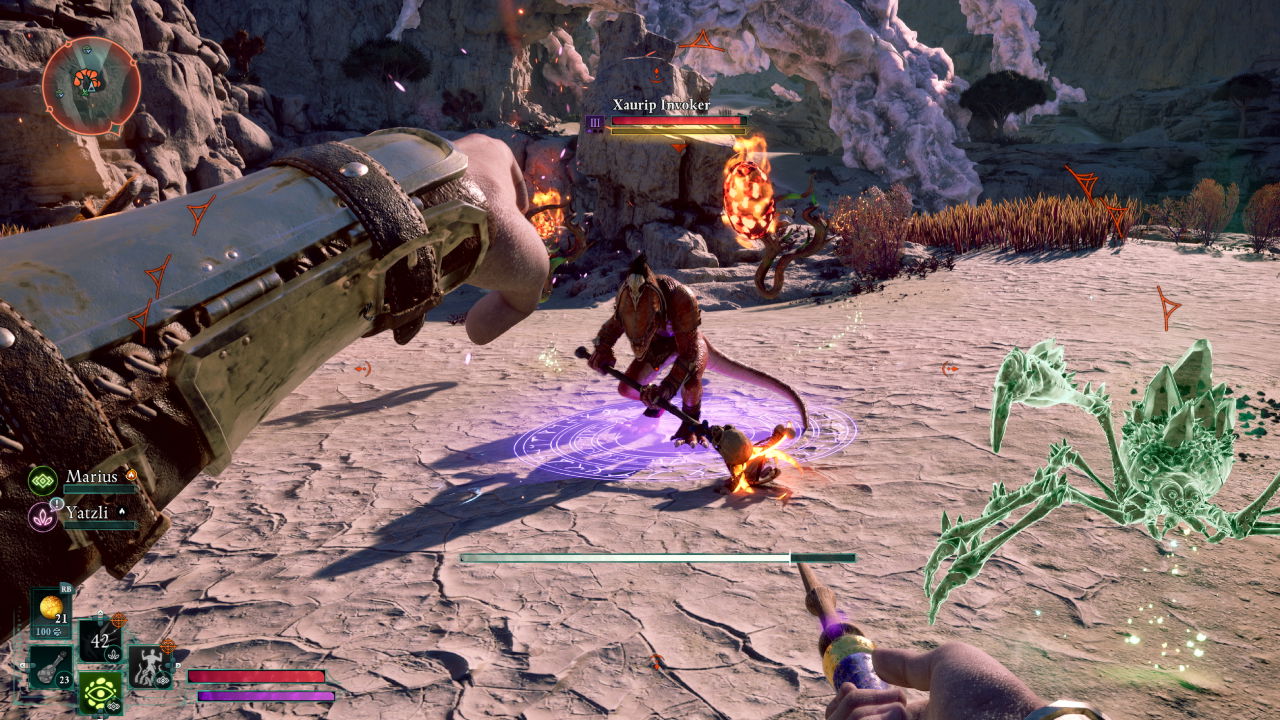
Seth, do you have something?
Seth McCaughey: I think there are some subtle differences in terms of navigation, pacing and such when you’re moving about it, like the flow is a little more…try to make it a little more fluid in 3P to make the footwork really work solidly. But other than that, yeah, everything is as close as we can make it.
OK. Now, having been working on Avowed, do you all personally have a preference between first- or third-person?
Seth McCaughey: Oh, sure. As I said, personally, I prefer 1P slightly. I just enjoy the immersiveness. just being able to look around the environment as if I’m there. But, you know, like you, sometimes I like to jump into 3P just to look. To, you know, check out that character I spent so much time in the character creator making.
Ash Kumar: So every time I played the game with my team, we’re split two and two. Half of them just love playing in 3P, and half of them are 1P. I’m on the 1P side, but it really helps when we are playing this game in team meetings. We’re like, “Okay, we’re kind of doing the same thing. So let’s see how that looks in 3P, and let’s see how that looks in 2P and in 1P.” So yeah, it has been really nice to have multiple people kind of go off to one direction or the other, which makes me feel that it’s a consistent experience in both ways, which is great.
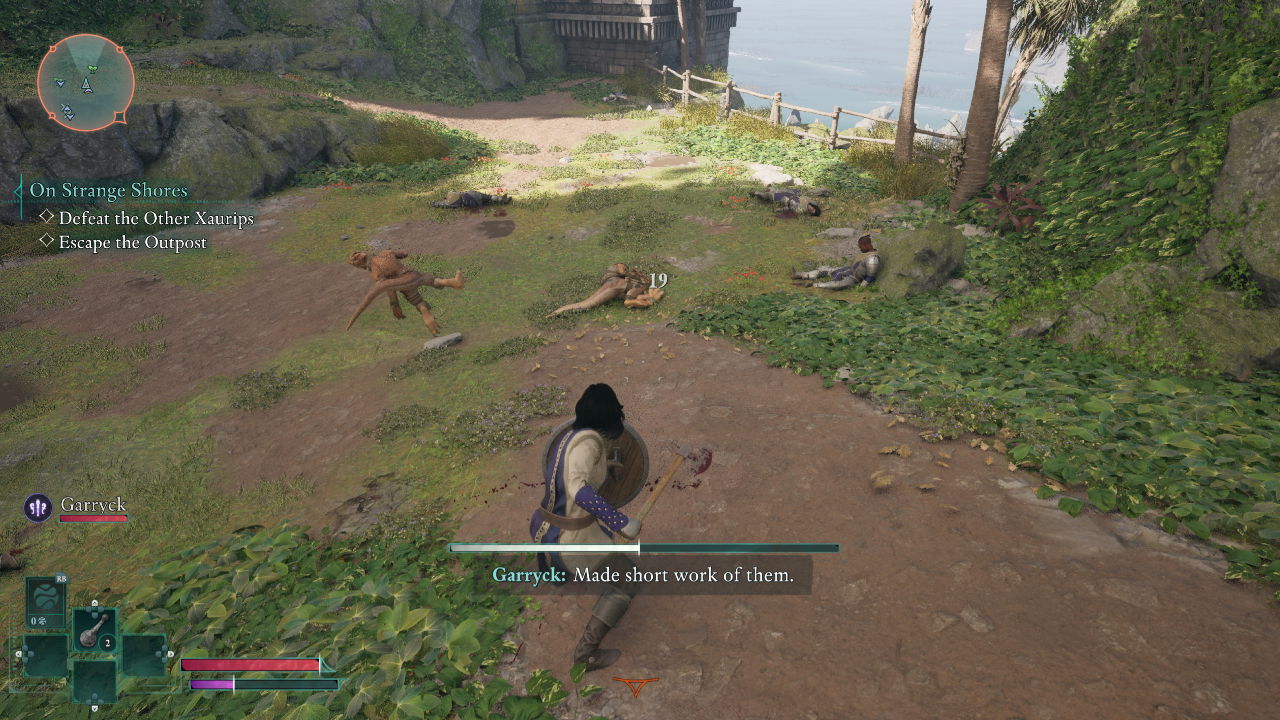
And makes you feel like you’re doing it for a reason. People actually want it, right? What about you, Gabe? Any choices?
Gabe Paramo: I’d like to, in the middle of combat, just switch erratically between the two. No, I’m kidding. I definitely think there’s an element where you kind of get into the combat mode. And for me, it’s like that visceral combat feeling. And then also, I think there’s an element of… you’re getting to exploration mode, right? Like kind of switching between kind of those two elements, I think.
When you feel like the pressure is not on you, you want to just kind of take a look at your surroundings and also switch between. I don’t know. It’s kind of a moment-to-moment as you’re trying to see closer to action versus see further away. It really depends on that moment in the game you’re trying to go for. So again, it’s all about the player choice.
Absolutely. And is there anything, any special features or the way things look in first-person or a third-person that the three of you are really a fan of? Hard one, I know.
Ash Kumar: I think there are a bunch of abilities that we put double the effort for them to look identical in 3P and 1P. One of the examples is there is an ability called Arcane Veil, where you summon a bubble around you that reflects any damage that you take. So when you’re in 3P, you have this aura, this magic bubble around you that envelops you, which looks super. It’s pretty, it’s really pretty, but when you’re in 1P and if you were to do the same effect, it would obscure the entire screen, so we did a custom camera effect for that one that would appear around the edges of the screen, and not in the center. It turned out pretty well
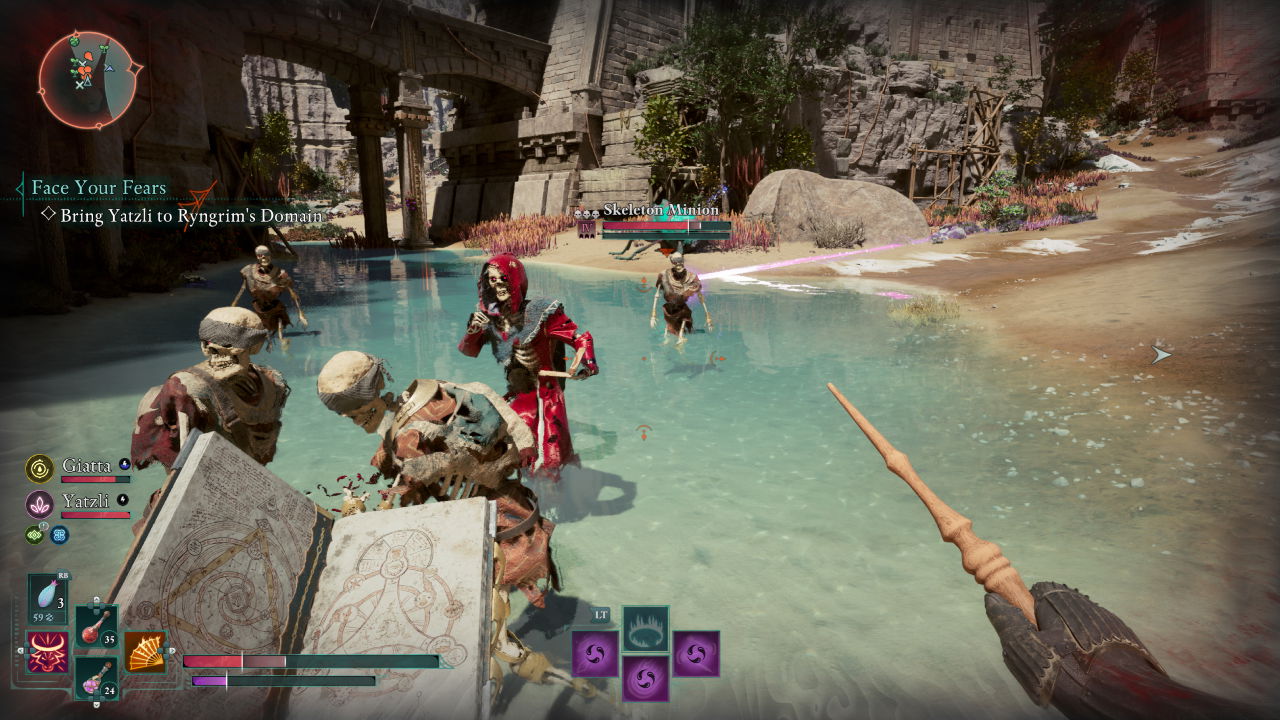
Gabe Paramo: I’m kind of torn between the status effects that we had to make represented in both first-person and third-person, right? So, “Hey, you’re poisoned,” or “Hey, you’re frozen,” or these elements. But then, if you switch to third-person, you still get a clear representation.
But then I’m also torn between the parkour. The parkour anywhere system that we have, where if you just try to parkour in a thing and it just works, you’re like, “Oh, cool, that worked!” And then, just making sure that the animations worked across the board, we did a lot of work there. And so I’m super proud of the team for all the work they put into achieving that.
Ash Kumar: I think one of the things that Gabe just mentioned—every time I’m parkouring somewhere super high, I make sure I’m in first-person because I love feeling that pit in my stomach when I look down. I’m like, oh my god. It feels so good.
Awesome. Seth, do you have any favourites?
Seth McCaughey: Gosh, I don’t know. I’m really proud of the charge ability for the fighter tree. The 3P on that, the silhouette on the character, I feel like I really got something I’m happy with there.
I actually haven’t seen it in 3P yet, so I’m going to have to do that. I’ve run into walls a lot, though, so I’ll have to check that out. Those are all the questions I have for you. Thank you so much. All the work you’re doing on Avowed is amazing. I adore the game so far and will be diving back into it when I leave here.
Avowed releases on February 18, 2025, on Xbox Series X|S and PC and can be pre-ordered now.
- Premium Edition SteelBook includes: Avowed base game, Avowed SteelBook, Living Lands map, two Premium Skin Packs, and access to Avowed Digital Artbook & Original Soundtrack.
- You are the envoy of Aedyr, a distant land, sent to investigate rumors of a spreading plague throughout the Living Lands—an island full of mysteries and secrets, danger and adventure, choices and consequences, and untamed wilderness.
- Premium Edition includes: Avowed base game, Premium Skin Packs: 2 sets of bonus skins for each of your companions, and access to Avowed Digital Artbook & Original Soundtrack
- Set in the fictional world of Eora that was first introduced to players in the Pillars of Eternity franchise, Avowed is a first-person fantasy action RPG from the award-winning team at Obsidian Entertainment.
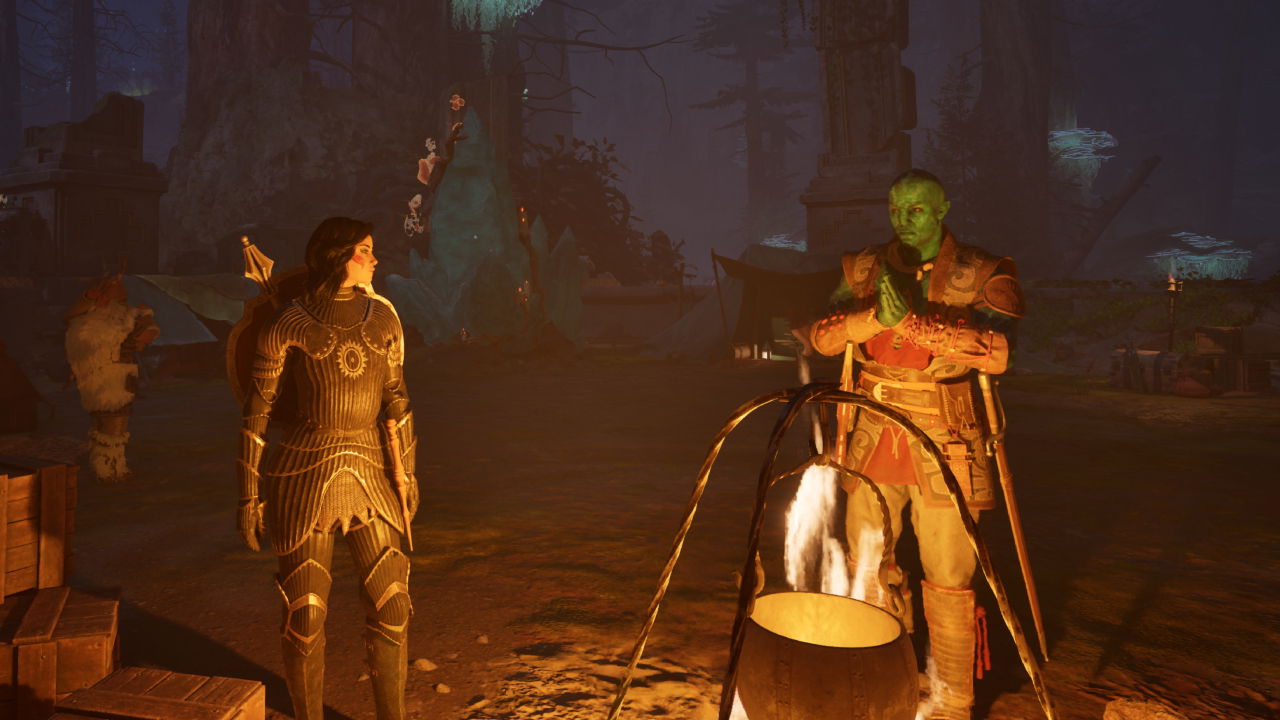

![Avowed: Crafting Two Worlds In One With First &Amp; Third-Person Avowed Premium Edition - Xbox Series X|S And Windows [Digital Code]](https://m.media-amazon.com/images/I/51cQZDt8neL._SL160_.jpg)



